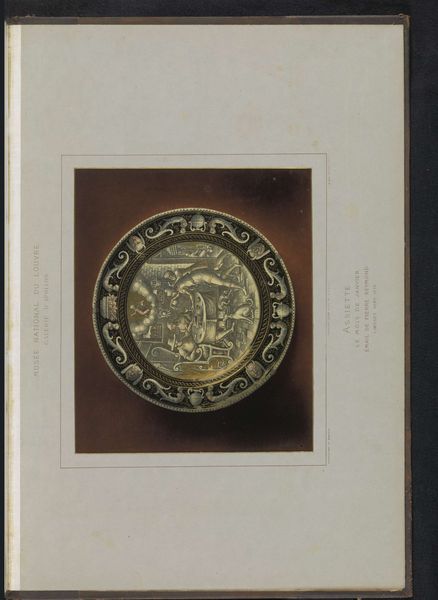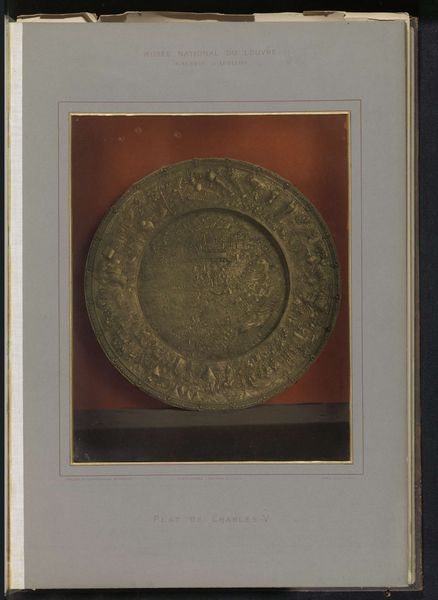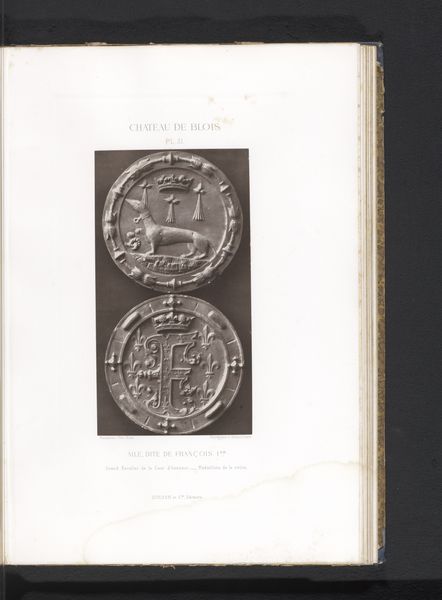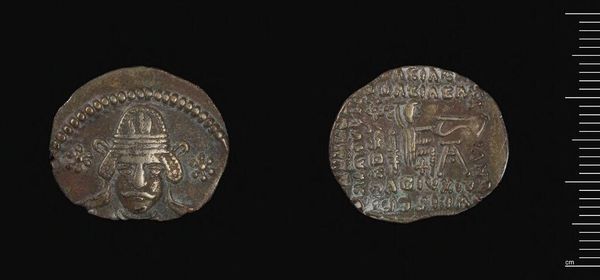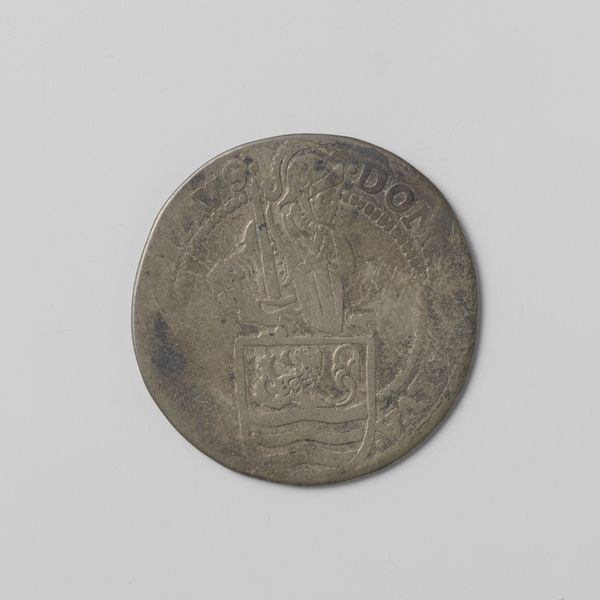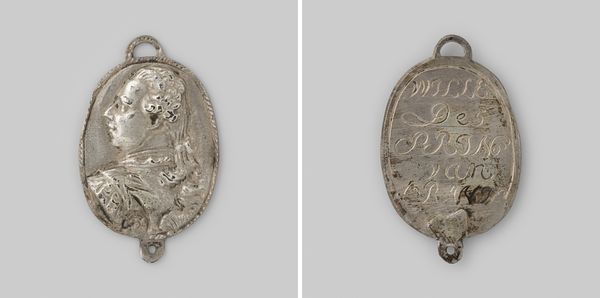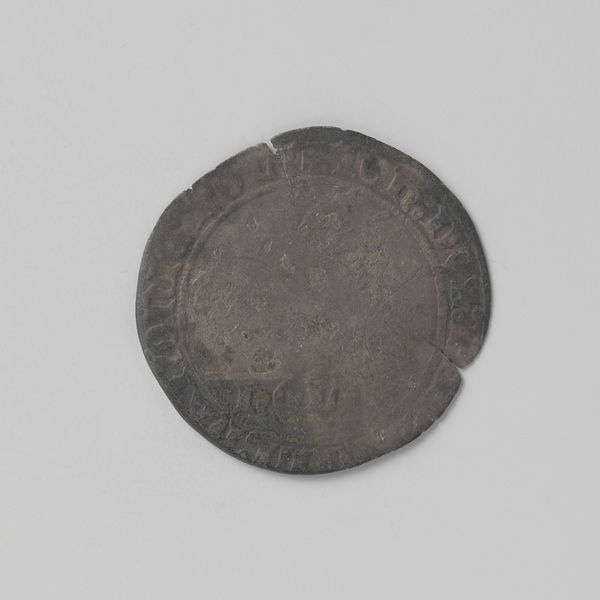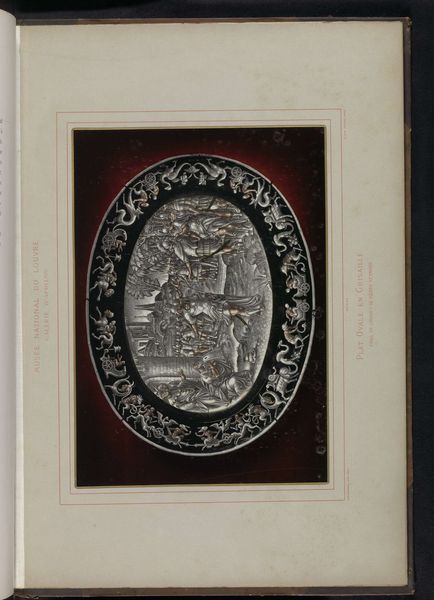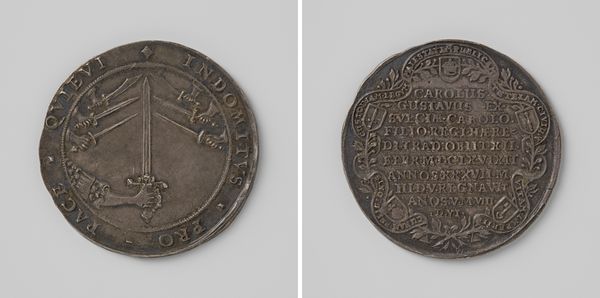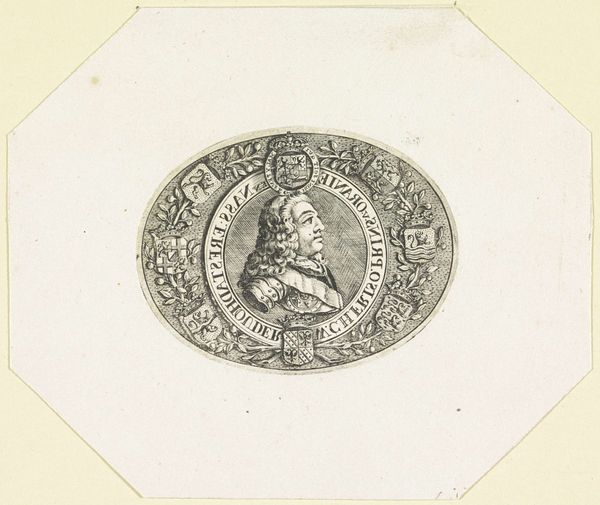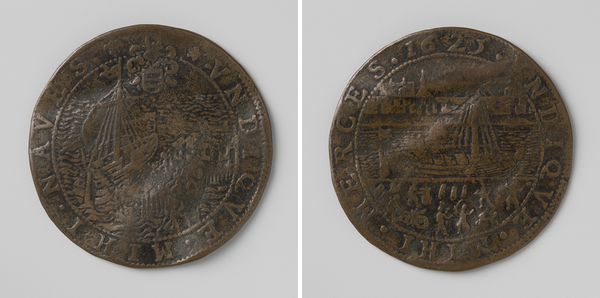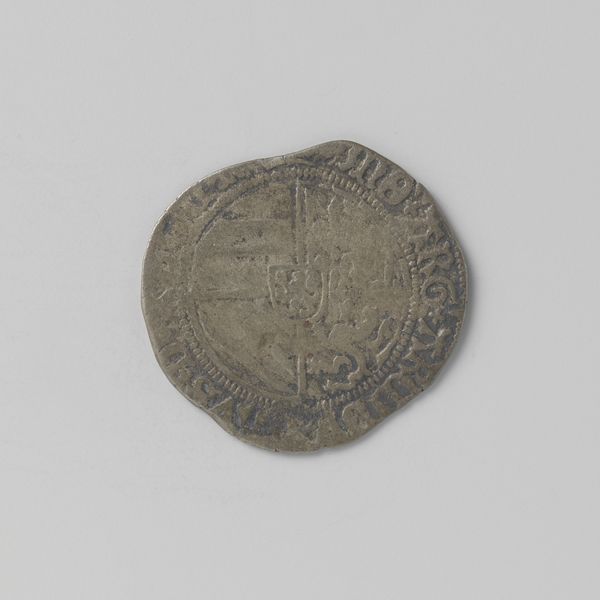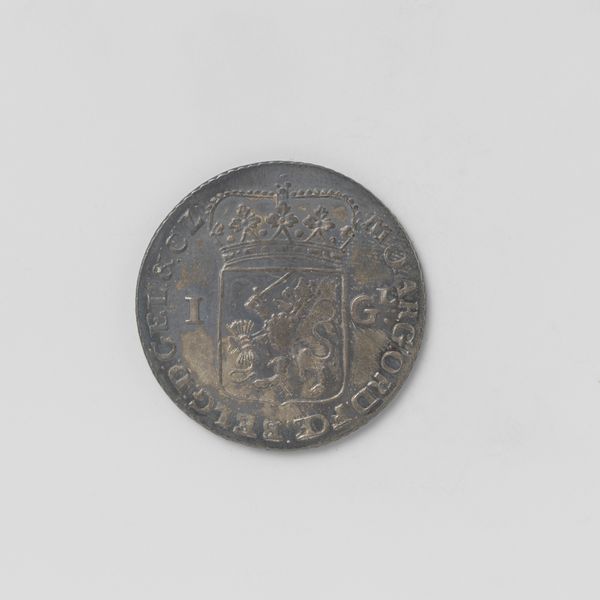
mixed-media, print, metal, photography, engraving
#
mixed-media
# print
#
metal
#
11_renaissance
#
photography
#
coloured pencil
#
history-painting
#
engraving
#
mixed media
#
watercolor
Dimensions: height 336 mm, width 250 mm
Copyright: Rijks Museum: Open Domain
Curator: Looking at this, I’m immediately drawn to the photograph’s somber yet regal aura. The tonal range captured feels… weighty. Editor: And that’s a perfect encapsulation of what Léon Vidal achieves. He made this mixed-media photograph sometime between 1876 and 1883 of the Shield of King Henry II of France, employing a fascinating combination of print, photography, and metal, among other materials. Curator: A shield. What resonates is not merely protection, but a powerful statement about the King and Renaissance ideals. The scenes engraved feel dense. Can you decipher what they narrate? Editor: I would say they symbolize power and classical allusions; notice the battle scene in the central cartouche. There is this clear effort to legitimize rule through military strength and this ties directly into how Henry II and subsequent monarchs wanted to be seen in the political theatre of their time. It’s potent propaganda. Curator: Precisely. It's fascinating to think about this object through that prism. The symbolism makes it a tangible vessel of collective memory, where ideas of heroism and power, as depicted in this Renaissance artwork, transcend their specific historical context. One can ask, how far does it resonate with the idea of France and French power today? Editor: It makes you think, doesn't it, about how images like this shield operate even now? Vidal was definitely engaging with the popular historical interest bubbling during that time by using photography. He wasn't just showing off something old. It becomes part of a bigger, politically charged display of French heritage at that point. Curator: The metallic textures and photographic nuances coalesce to create an iconographic statement. Editor: A symbol not just of past power, but also a reflection on how that power continues to shape national identity and visual language even through reproductions like this. What strikes you most as we wrap up? Curator: How the image persists as a potent artifact, layered with meaning and still capable of eliciting profound cultural echoes. Editor: It's a fantastic case study for analyzing how we utilize historical objects in modern-day cultural and political dialogues, wouldn't you agree?
Comments
No comments
Be the first to comment and join the conversation on the ultimate creative platform.
